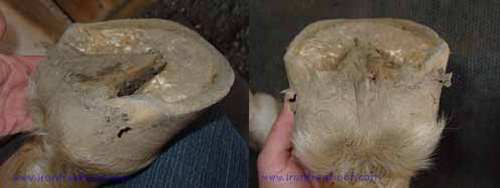|
Natural Hoof Care for HorsesProper trimming is a key element of natural hoof care for horses. Here is a series of photos showing a naturally trimmed hoof. Healthy but Overly Long HoofThis is my Arabian, Khala. He is the cobbler's child and sometimes goes a little too long between trims. 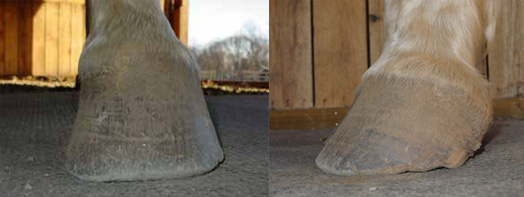
Before trim Pictures 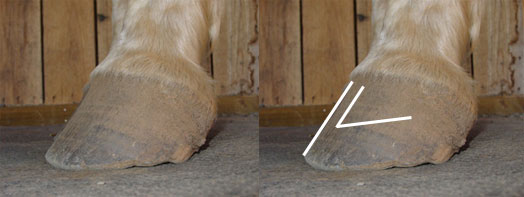
If I was just seeing these hooves for the first time, my impression would be that they were strong and healthy. They are overly long, but nothing looks horribly wrong. What do I think about the coffin bone placement? I think there is a tight connection between the coffin bone and hoof wall because of two main reasons:
As far as balance goes, his feet are not perfect. Looking at this picture, he is a little longer on the left than the right and his heels are high. I don't think the coffin bone is ground parallel because the heels are high. Another reason I suspect this is because the coronary band doesn't slope normally. It is relatively flat with a bulge in the heel quarters. I don't get too worried about the coronary band at this point. I will just take note of the changes after trimming. What would my priority be for this foot? I would take care of the extra length and evaluate after that.
These photos show the wall length and concavity of the hoof.
Natural hoof trimming for horsesWhere do I begin? 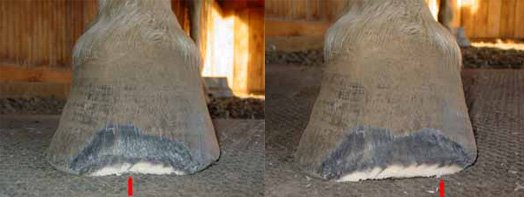
I start by adjusting one section of the hoof to the proper length. Usually my starting place is at the toe or the heels. I have shortened the wall with my mustang roll. Khala has especially thick inner hoof walls. (This is the white portion showing at the bottom.) This makes his feet really good for teaching. The roll is particularly clear. I then adjust the next portion of the hoof. 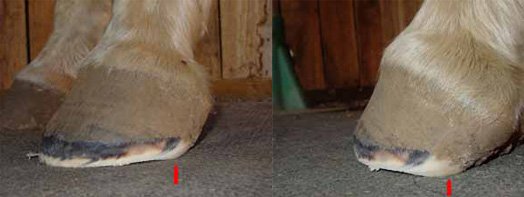
I taper the hoof all the way back to the heels. My mustang roll continues around the back of the hoof into the bars. The red arrows point out how I have shortened the heels. All of this has been done while the hoof was on the stand. 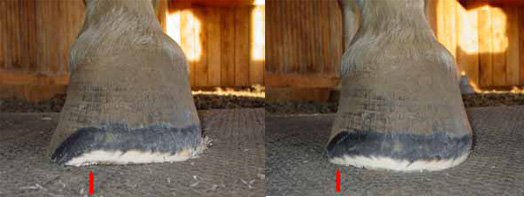
I started at the toe and shortened one half of the hoof. I now go back to the front and work the other half of the hoof in the same way. Notice how the inner hoof wall is uneven and shows where I have stopped. 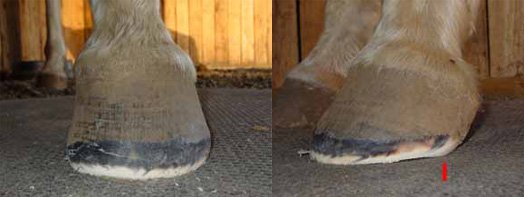
This looks much better. I have shortened the walls and rebalanced the foot. 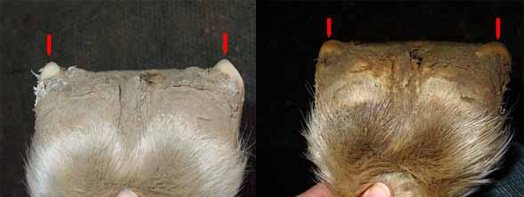
I have done all I can do easily from the top. Now I have these little points on the heels that I have to finish from the bottom. The second picture is what it looked like the next day. I forgot to take the after picture the day before. 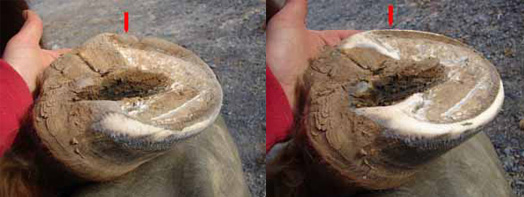
This set of pictures is of my mare. I didn't have as good a photo showing how sometimes the wall is still a too tall. I ran my rasp around the edge to lower it, but made sure to leave a little height above the sole everywhere but 12:00. I do this regularly. It makes a huge difference in their comfort. 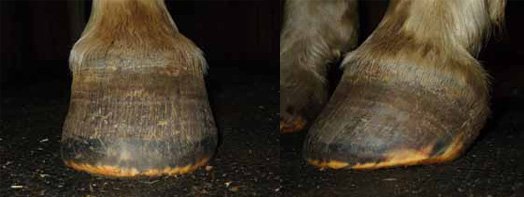
This is the foot the next day. As the years have gone by, I have found that I leave the heels higher than I used to. Khala was my first barefoot victim. I know his feet well and he is much happier! 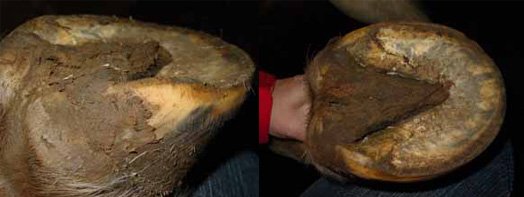
This is just one example of natural hoof care for horses.
|
